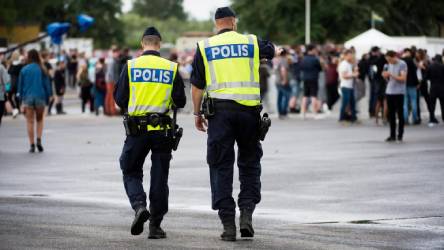
pic: Izabelle Nordfjell/TT
Operation Rimfrost is officially over tomorrow. Rimfrost was the name given to the special police operation last fall after the particularly spectacular shooting death of a woman holding a baby on the street in Malmö last year. The outrage that followed was such that all resources were going to be gathered together for a particular period of intense police presence and law enforcement.
Rimfrost was called, in official Swedish terms, a särskild händelse, which allowed for increased police authority to arrest, charge and hold suspects. As written about in this post, hopes were that more criminals would be taken off the street and that there would be with far fewer shootings as a result. The results would be seen in six months, it was said.
Sadly, six months have now gone by and nationally, shootings have only increased. In official-speak, SvD reports, Rimfrost “had an effect but did not reach the target.” The effect spoken of is in the Malmö and Uppsala region, where shootings and explosions have actually decreased. The number of shootings in the last two years (from well before Rimfrost started, however), has been cut in half. Even the number of explosions has been slightly reduced. The number of shootings and explosions, however, has only increased outside Malmö and Uppsala, making the the total numbers go up. One of the features of these special operations is that police officers can easily be moved to one area from another, reducing forces in one area to increase them in another. The increase in crime outside focus areas has perhaps been the result.
Another result of the Rimfrost operation has been, alas, to see how criminal activity is truly focused in exposed areas. “Crimes are committed more often in those areas that are classified as vulnerable. Crimes are committed up to eight times more often in these areas than outside these areas” said Mats Löfving, chief of the National operations division (Noa): “For criminality to go down […] it is absolutely necessary to fortify security in these areas.” However, as Stefan Hector – chief of national command for Rimfrost – noted, Rimfrost was more meant to break the development of a pattern in shooting and explosions rather than to cure social ills.
Minister for the Interior, Mikael Damberg, said that he “had hoped for fewer shootings” but said he would not call the operation a failure: “The police have become much more aggressive. I see that as a success.”
